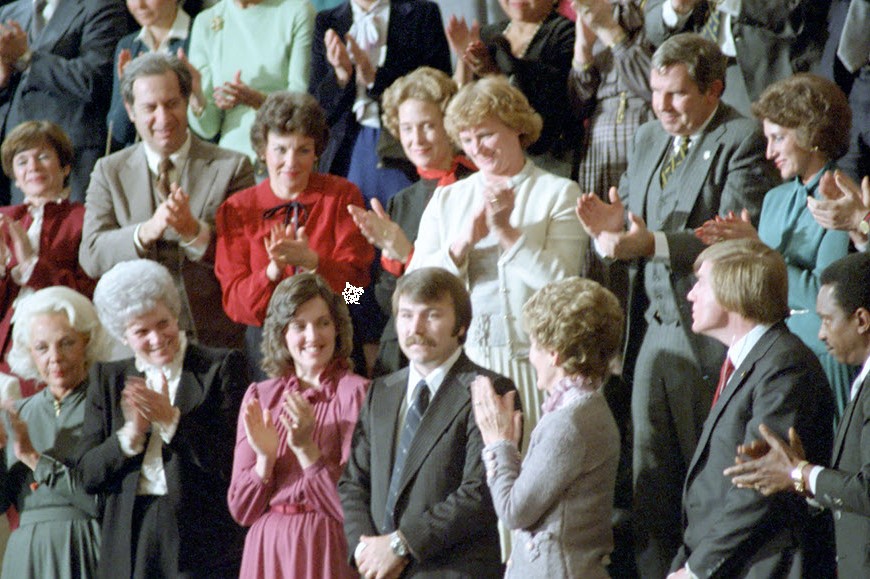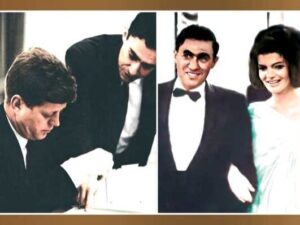How to catalyze change with real stories about compelling people
One person’s compelling story is an underused tool by associations, trade groups or anyone else advocating for change.

Lenny Skutnik was on his way home from work on an icy day in January 1982 when a Boeing 737 crashed into the 14th Street Bridge in Washington. He worked at the Congressional Budget Office, where he ran errands and handled the mail.
He stopped to watch the dramatic scene, as bystanders on the riverbank reached for survivors and a National Park Service helicopter tried to pull people from the frigid waters. Then he noticed that a drowning woman too weak to grab a rescue ring dropped from the helicopter. Skutnik, 28, who had never taken a life-saving course, dove in, swam to the woman and pulled her to the riverbank.
Priscilla Tirado was one of five people on the plane who survived; 78 died in the crash.
Thirteen days later, on Jan. 26, Skutnik sat in the gallery of the U.S. House of Representatives as President Ronald Reagan praised him for his heroism during the State of the Union address. Skutnik, Reagan said, represented “the spirit of American heroism at its finest” – a celebration of the man, but also the ideal of rugged individualism that was fundamental to the president’s political philosophy. Congress gave Skutnik a standing ovation.
Since that speech, every president’s State of the Union has featured stories of exemplary people as they watch from the gallery, often sitting with the First Lady. In Beltway circles, these guests are known as “Lenny Skutniks.” They’re also prominent examples of the power of storytelling to advance a policy agenda.
Whether it’s called government relations, public affairs, “the policy shop” or something else, advocacy is an essential function of most associations, nonprofits and many for-profit companies. But while the communications team supports the advocacy folks, storytelling remains a curiously underused tool in the arsenal.
In fact, there’s no better way to persuade and activate audiences around a policy agenda than compelling stories about real people. Ample research has shown that facts, numbers and abstract arguments barely move the needle, but emotional stories can move mountains. Information conveyed in a story is up to 20 times more likely to be remembered. Stories literally excite parts of our brain associated with empathy and motivation.
The power of storytelling is well known to marketers, and at Ragan Consulting we work with clients every day to help them create compelling stories for everything from internal comms to brand journalism. For political campaigns, stories are a staple of every stump speech – if only we each had a dime for every presidential candidate who’s talked about “a woman I met in Des Moines the other day.” Yet many organizations fail to make full use of this tool in their advocacy comms.
Great storytelling is both science and art. It takes practice and skill. One big shift is that you need to show, not tell, the audience – and you may have become quite used to “telling.” But communicators can elevate their game right away by focusing on storytelling basics. Here are the three essential elements to successful advocacy storytelling, the kind that actually gets people to believe in your cause and take action to support it:
1. People, people, people. The primary task of advocacy communications is to make an emotional connection to the audience. Appealing to the heart, not just the head, means centering your story on people – or better yet, one relatable person, hero. It’s almost impossible to read, listen to or watch a story about a human being who wants something we can all understand – to pay the rent, to survive cancer, to protect her house from wildfires – and not feel empathy.
2. A narrative arc. The hero not only has to want something, but also struggle to get it. A compelling story means drama: the audience must see the hero facing obstacles; to overcome them, the hero goes on some kind of journey to face success and failure. You can convey that journey economically – “after dozens of calls to customer service, she finally got through to a sympathetic rep” – but you can’t leave it out. When we encounter stories of struggle, our brain really gets interested. We automatically start asking, “What would I do in that situation?” and “What happens next?” We’re hooked, invested in the hero’s story and its outcome.
3. Call to action. When the story ends – sometimes with victory, sometimes with painful defeat – the audience will share that emotion and be ready to do something. You must make that request explicit. Whether it’s “Write your senator” or “Sign this petition” or “Click to donate,” a call to action is the best way to channel the emotional energy your story has created into real impact, right away.
Skutnik always downplayed his heroism. He worked for the budget office for another 28 years, eventually moving from the mail room to “conducting the agency’s printing and providing IT support,” according to a press release issued by the CBO upon his retirement in 2010.
In a 2016 interview, he offered some advice that’s useful today to policy communicators using their own Lenny Skutniks: Don’t overdo it.
“Why do presidents now need 20 guests? I’m not going to judge that,” he said. “They get carried away with too many guests.”
Nick Lanyi is an affiliate consultant with Ragan Consulting Group. He specializes in advising associations and trade groups and also crisis communications. Schedule a call with Kristin Hart to learn how we can help you improve your communications effort with training, consulting and strategic counsel. Follow RCG on LinkedIn here and subscribe to our weekly newsletter here.






